New in Mozart 16
Mozart 16 was released in September 2022.
It introduced the following new features.
Illustrations
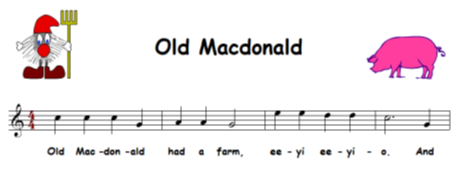
Mozart pieces may now contain pictorial
illustrations imported from .emf or .wmf files.
Playback
Mozart now offers direct, unrestricted playback with one-channel-per-strand even when there are more than 16 strands.

Exporting Audio Files
Mozart can now save audio files in .wav and .mp3* format as well as MIDI (.mid) files.
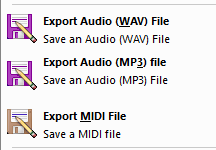
*Saving mp3 requires Windows 10 or 11
Expression
Mozart now plays back crescendi and diminuendi over long notes (for appropriate instruments).

Positioning of dynamics
The automatic positioning of dynamics is now improved so that, by default, they are centred on a note.
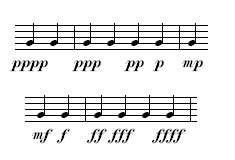
Lyric line spacing
 When, for example, a piece of music with three verses under the staff, moves to a chorus with a single lyric line
(common to all three verses) the vertical space under the staff automatically adjusts itself appropriately.
When, for example, a piece of music with three verses under the staff, moves to a chorus with a single lyric line
(common to all three verses) the vertical space under the staff automatically adjusts itself appropriately.
You can epand the space for editing and contract it again for printing.
Music Break
 The function of a music break has been updated and upgraded.
The function of a music break has been updated and upgraded.
It now permits more flexible creation of different 'pieces' within music file.
DS, DC, Segno, Coda, Fine
Where previously no more than one each of DS, DC,
 ,
,
![]() ,
Fine had been allowed in the music,
you can now have one of each in each piece (as defined by music breaks).
,
Fine had been allowed in the music,
you can now have one of each in each piece (as defined by music breaks).
Piecewise play-back
 The
play-back command can now be used to play the whole music (as before), a single piece (defined by music breaks),
or the whole music with a user-configurable pause between pieces.
The
play-back command can now be used to play the whole music (as before), a single piece (defined by music breaks),
or the whole music with a user-configurable pause between pieces.
Swing style
There is now the possibility to introduce a change in swing style within the music. The recommendation is that this should only be used at a music break, so that (for example) one 'piece' can be played 'almost straight' and another with 'triplet feel'.
Importing abc
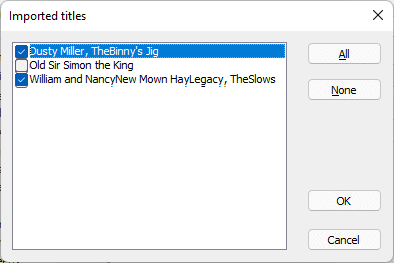 An abc
file may contain a large number of pieces. When importing such a file, Mozart now offers a choice of which pieces to include
(instead of, as previously, opening all of them automatically in separate windows).
An abc
file may contain a large number of pieces. When importing such a file, Mozart now offers a choice of which pieces to include
(instead of, as previously, opening all of them automatically in separate windows).
Exporting abc
Some improvements to the accuracy of abc export have been made. The export now includes grace notes.
Rendering of ties and short slurs
Mozart's rendering of these aspects has been updated following our policy of continuous improvement.

Arpeggiation scope
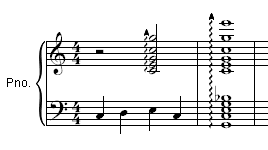
A stack of notes may now be arpeggiated to include all notes on a single strand, or all notes on all
the strands on a single stave - including a grand staff.
Arpeggiation timing
 Arpeggiation timing is now user-definable for each arpeggiated chord.
Arpeggiation timing is now user-definable for each arpeggiated chord.
Laissez Vibrer
Laissez Vibrer and arpeggiation are now accessible in parallel with ornaments.
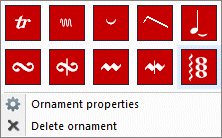
Leger lines with the caret
 Leger lines may (optionally) be shown with the caret, emphasising its pitch.
Leger lines may (optionally) be shown with the caret, emphasising its pitch.
Repeat bar-lines
Now with optional "end notches":

Text box borders
...are now supported.
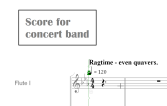
Dynamics in repeated sections
Different dynamics on repeat are now supported:

Screen resolution
When opening a file, the magnification is now (at least approximately) the same as it was when the file was saved, even if the computer which saved it had a different screen resolution from the one which is opening it.
Improved highlighting
Phrase marks are now highlighted more visibly when editing.

*Reference

In 2011 Faber Music published "Behind Bars" (subtitled "The Definitive Guide To Music Notation") by Elaine Gould.
As noted earlier we continue to take this work as the gold standard for recommended good practice.
 Mozart pages copyright © 1995-2025 David Webber.
Mozart pages copyright © 1995-2025 David Webber.